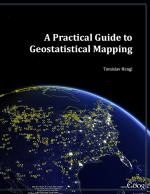Although Hector Neff and Carl Lipo, two Cal State Long Beach anthropology professors, were recently awarded grants to further their research, a large number of anthropology classes are on the chopping block.
Neff, the principal investigator for the Institute for Integrated Research in Materials, Environments and Society at CSULB was awarded $295,226 from the National Science Foundation. Lipo will soon be awarded $310,000. Both grants will be in effect until 2012.
“Getting two grants in a row — it is pretty incredible,” Neff said.
Both professors had to write proposals to NSF and compete against other institutions and schools, such as Stanford University and California Institution of Technology.
“We are doing what we are supposed to be doing; we are bringing the funding and providing research possibilities to students,” Neff said.
IIRMES will be using some of the money to purchase new research equipment such as a laser fluorination system, which will be used to do research on rocks and bricks in order to get the mineral information.
“It will also provide enough money to pay for the expertise to keep the lab running,” said Gregory Holk, a geology associate professor at CSULB and IIRMES co-principal investigator.
Courses proposed to be dropped
- 453/553: Archaeological Field Research Design
- 472/572: Archaeology of the Desert West
- 481/581: Faunal Analysis
- 485/585: Physical Science Techniques in Archaeology
- 464/564: Quantitative Methods in Anthropological Research
- 488/588: Advanced Methods in Near Surface Remote Sensing
- 551: Artifact Analysis
- 571: Prehistory of Eastern North America
- 573: Archaeology of California
- 587: Cultural Resource Management
The IIRMES lab is used in collaboration by biology, anthropology and geology departments at CSULB.
“Grants allow support — anything that benefits the lab benefits the whole,” said Hayley Zemel, a biology graduate student.
Holk said the instrumentation about the research and lab work is utilized for archaeology findings. According to Holk, there is about $5.5 million in instruments at IIRMES. With the use of a scanning electron microscope, the research facility is able to view small images by using high magnification.
Holk is focusing on light isotope work at IIRMES. The research makes it possible to study the diets of ancient civilizations.
Holk said that by removing the plaque build-up from discovered skeletons, they can look at what the people ate. Each food has a different isotope level of carbon and by studying it, they are able to tell what the ancients ate, such as if it was grain or corn.
The lab has one of two time-of-flight mass spectrometers, which is sought by many researchers. The machine can tell the concentration of an element from archaeological findings such as pottery, Holk said.
“It is important to know the chemical composition of the pottery; it is their form of fingerprints,” Holk said.
However, many undergraduate and graduate students from the anthropology department at CSULB will not be able to work at the research facility.
“Last year, 16 classes were eliminated from the anthropology curriculum,” Neff said. “These classes were the ones that would educate and prepare students in order to work in the lab and prepare them to utilize the equipment, and for future employment.”
The classes were taken off the schedule but may still be offered in future semesters. The College of Liberal Arts and Academic Senate, however, may later decide to eliminate the courses entirely, according to Lipo.
“We are being restricted on the students we can teach,” Lipo said.
Neff said the instructors are told they cannot teach students certain subjects, which they need to learn for future employment.
“The main issues are people’s perception of the sciences. How do we co-habitat — there are many branches of study in the archaeology department,” Lipo said.
There are a lot of difficulties because the work Lipo and Neff are doing are based in science, while those in the liberal arts have a different perspective, Holk said.
Holk said this is the best place for master’s students to go, and that the department has as many instruments as well-funded research labs.
Many master’s students from CSULB are losing out on this opportunity, he said.
Neff mentioned that he has had to get students from other universities to work at IIRMES, such as Cal States Dominguez Hills and Fullerton.
“When the committee decided to eliminate the 16 classes they did not even know what they were eliminating — they only had class numbers in front of them,” Neff said.
Every January, Neff usually takes a group of graduate students to Guatemala to do field research. This coming January, he will not be able to go on the trip.
Neff said, “There are not enough students who know how to use the equipment properly, I need at least some students who know what they are doing.”
